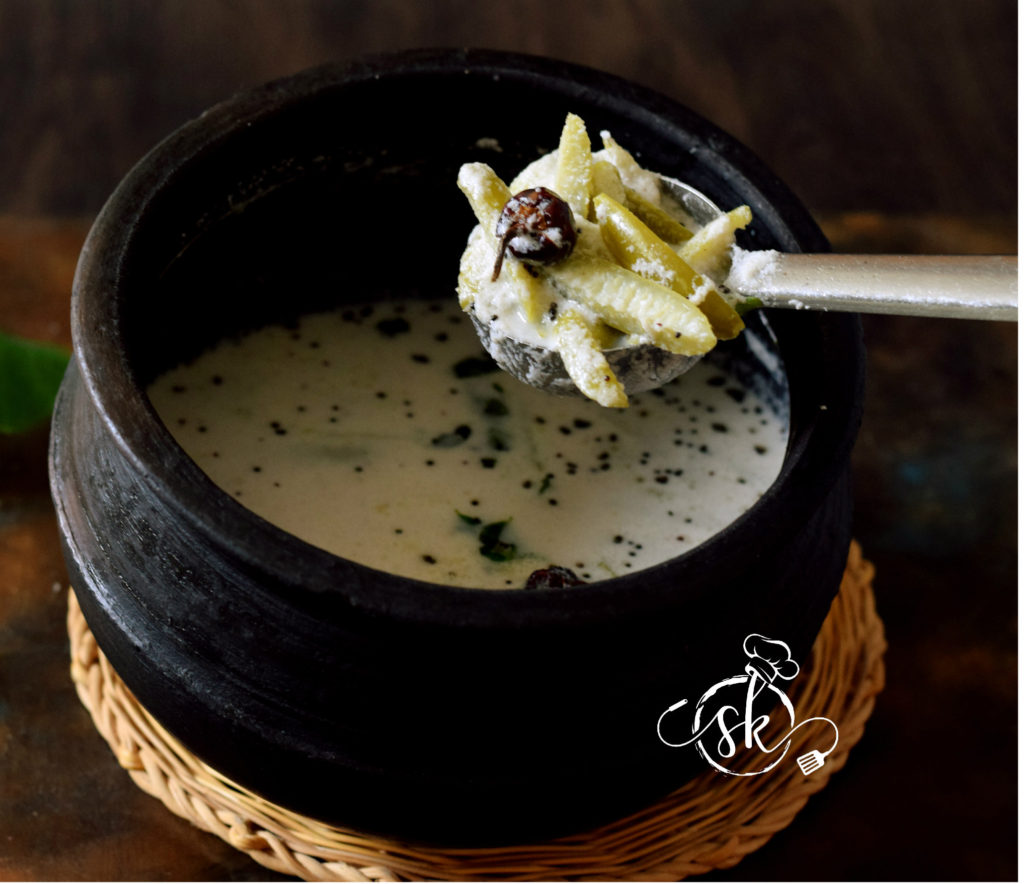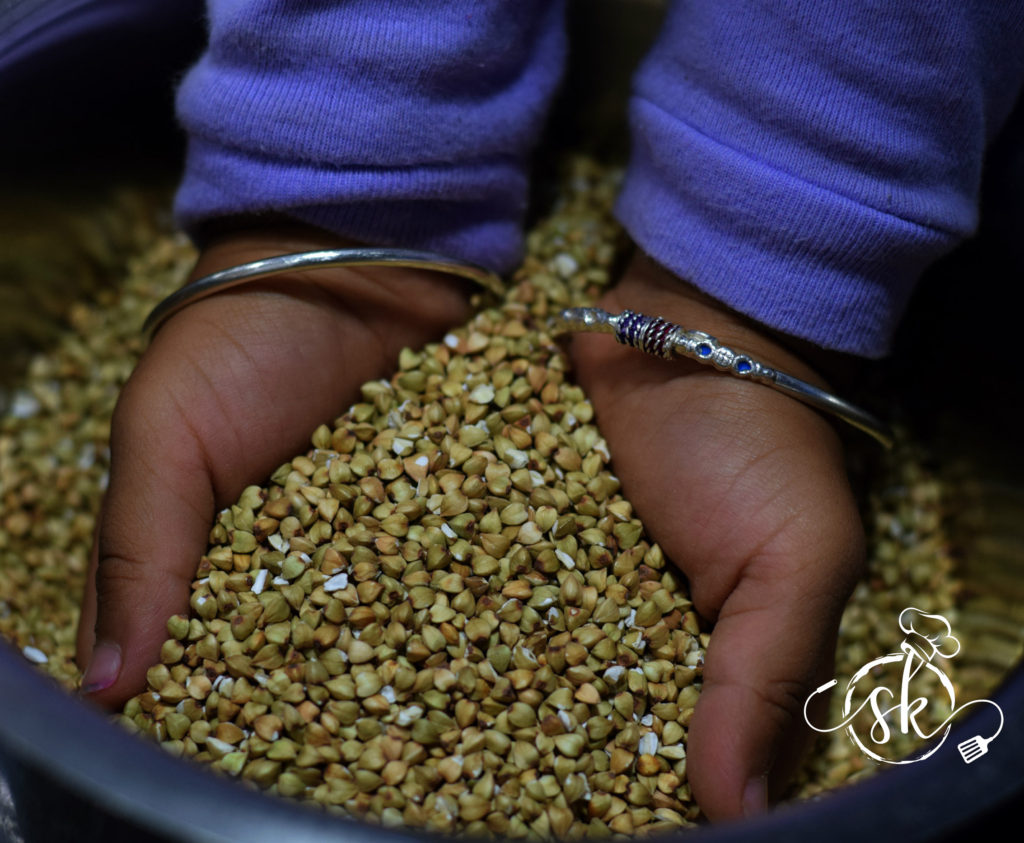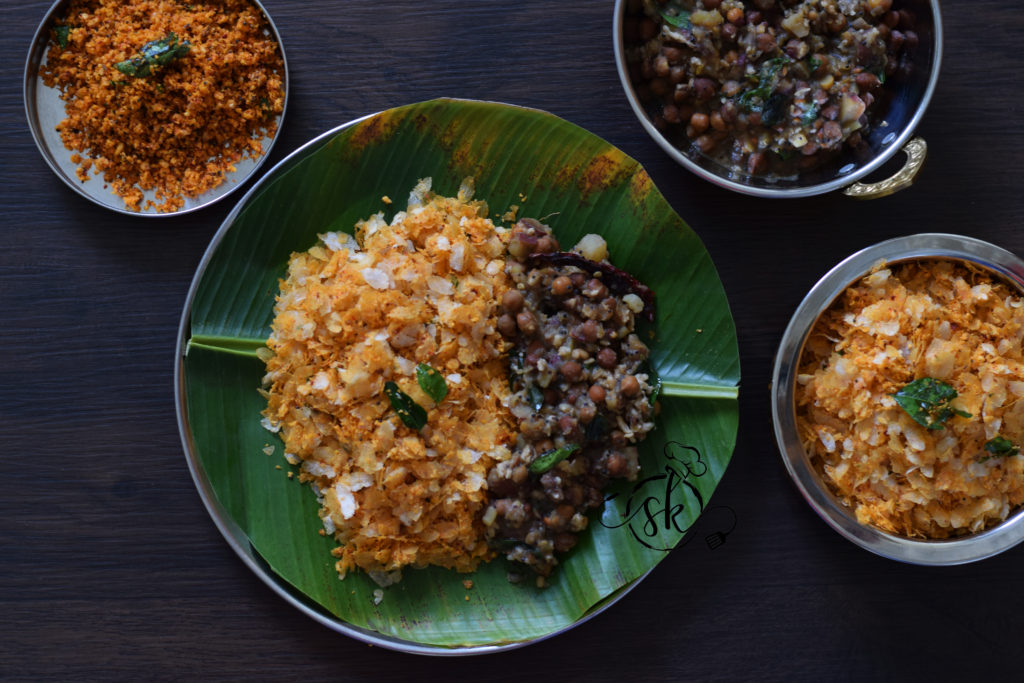Pathrode is a much-loved Mangalorean delicacy made with colocasia leaves and spice batter. We also make two versions of Pathrode, one is masala batter smeared, rolled, and steamed. Other one is by chopping the greens, mixed with masala laced batter, wrapped in wilted banana leaves , and steam cooked. This version can be prepared by using many other greens as well as banana blossom or flower as well.
After steaming these flat steamed dumplings/ pathrode’s, they can be enjoyed in many ways. We usually steam cook this, the previous evening and relish hot Pathrode paired with fresh coconut oil when it is hot. Next day, we normally, break those dumplings by using hand, prepare 2 types of seasoning. One is Sweet- with coconut and jaggery. Other one is – without jaggery, by adding onion. This version is my childhood favourite and even now, I cherish it to the core.
In the evening, if Pathrode is left, we even make Pathrode bendi. It is nothing but big chunks of Pathrode, dropped in masala gravy , simmered, and cooked. It is the most loved version in my husband’s family.
I would share all the possible relishing methods in this post. First, we should look into the main preparation,

Ingredients:
Moringa leaves – 1 big bowl
Rice – 2 cups (1 cup red boiled rice or Kerala matta rice +1 cup dosa rice) OR only dosa rice
Coconut – from half coconut
Red chillies – 10 -12 ( Byadagi variety)
Coriander – 2 tablespoons
Cumin – 1 tsp
Tamarind – 1 big lemon size
Hing – 1 peanut size (optional)
Salt
Jaggery – 2 teaspoons
Coconut oil – 2 teaspoons
Method:
-Soak rice for 3 to 4 hours after washing it.
-separate moringa leaves from the twig, wash, drain, chop and keep aside.

-In the meantime, wilt banana leaves over a gas flame, wipe in a wet cloth and keep them ready.
-Make masala by adding coconut, coriander, cumin, hing, salt, jaggery, and red chillies. Add soaked, drained rice, and grind into a batter. A batter needs to be thick in consistency. Add very minimal water, and grind.
-Mix chopped moringa leaves with the batter, add coconut oil, and adjust the consistency, it should be semi-solid but pourable.

-Pour the mixture, fold it, and steam cook in an idli steamer for one hr on a low flame. You can leave these overnight in an idli steamer itself.
-At night, you can remove a couple of pathrode, and relish hot Pathrode paired with fresh coconut oil when it is hot. This is an experience in itself 😀

Next day morning,
For Sweet Oggarane/ seasoning:

Take 2 pathrode’s, break them into pieces and keep them aside.
To make coconut jaggery mixture, take a fistful of grated coconut, 2 to 3 tablespoons of grated jaggery and mix by hand.
For seasoning, take 2 tsp of coconut oil, splutter mustard, urad dal, one broken red chilli, fry until it turns red, and add a spring of curry leaves.
Mix in crushed Pathrode, coconut jaggery mixture and mix everything and allow it to heat and jaggery to melt and hold the flavour.
For Khara Oggarane/ Seasoning:

Take 2 pathrode’s, break them and keep them aside.
Chop one small onion little fresh coconut gratings.
For seasoning, take 2 tsp of coconut oil, splutter mustard, urad dal, 1 broken red chilli, fry until it turns red, and add a spring of curry leaves.
-Add chopped onion, fry until it turns transparent, mix in crushed Pathrode, coconut gratings and, mix everything and allow it to heat as well as to hold the flavour.
Now comes the,
Pathrode Bendi/ dumpling in masala gravy:

Here, we must break Pathrode into big chunks and keep it ready.
For Masala: Take one bowl of grated coconut, roasted red chillies – 3 to 4 , 1 tsp of coriander, ¼ tsp of cumin, and two cloves of garlic and grind into a smooth paste.
Heat 2 tsp of coconut oil in a wok, splutter mustard, and one broken red chilli, and add curry leaves. Add half the finely chopped onion and fry until it turns brown.
Now, add ground masala paste into the seasoning and adjust the consistency; add salt and a pinch of jaggery and boil.
When it starts to boil, add Pathrode chunks, and boil for five more minutes or until it reaches a thick consistency.
Serve hot, and enjoy.













